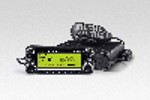CHIRP – A first look

If you own an ICOM D-STAR radio, you know how hard it is to program through the faceplate. And if you are a Linux user, you know that your options are either use the faceplate or borrow a Windows machine (or fire up a VM) and plunk down $60 for the software and cable to program them with. Until now that is. Enter CHIRP.
CHIRP is a cross-platform, cross-radio programming tool specifically focusing on ICOM D-STAR radios, although there seems to be nothing preventing you from using it with non-D-STAR rigs. This is new software (currently at version 0.1.9), so let’s look at the highlights.
The single biggest plus of this software is that it runs on Linux. This might make it unique in the realms of radio software. I am still seeking programming software for any radio that runs on Linux, so the fact that CHIRP does is a major feather in its cap. It is also cross platform, currently supporting Windows with Mac coming soon. This is a huge plus, especially for those of us in Emergency Communications. We do not always have the ability to pick and choose the operating system when we need to push a template or update one. The second plus is that CHIRP speaks to a number of ICOM radios, not just one model. This is one of biggest knocks against the ICOM software. If you have more than one radio, you have more than one piece of software for each model (I have three for my ICOMS, my IC-706 notwithstanding). And it does not require you to actually read the configuration of the D-STAR radio in order to build a D-STAR template, a serious failure in the ICOM software.
CHIRP is a simple piece of software to use. You can enter each memory channel individually by right clicking on a blank spot on the main screen and adding a new channel, where you fill in the frequency, off-sets etc. that you would normally expect to fill in. Another nice feature is that it automatically fills in the frequency steps correctly, something the ICOM software also does not do. Secondary tabs allow you to set up the additional D-STAR fields for MYCALL, URCALL and RPT1 and RPT2 fields. It also allows you to import CSV files and will translate ICF files.
Like all new programs, there is room for improvement. One of the single, most frustrating areas is in the area of empty memory channels. If you are entering data by hand, and you want to leave a memory channel empty, it is simple enough to create the entry and black out the frequency, but if you are importing an ICF file with empty channels, it only imports the frequencies to the first empty channel. This is a problem if, like me, you have split up your 2M and 440 frequencies, both analog and voice and simplex and repeater into different chunks. This is similarly true if you try and import a CSV file with a blank memory channel, although in this case, CHIRP gives you an error.
In my testing, CHIRP crashed. Not once but twice. Not a big deal, I had been saving my template as I worked right? Well, the program is refusing to open them, throwing a variety of odd errors.
I did not have a D-STAR radio available to test the connectivity, but the program will talk to not only mobile rigs, like the IC-2820H or the ID-880H, but also the IC-91/92s and the ID-RP repeater series, and as mentioned, this is a big benefit. One minor issue on the Windows platform is the communications port settings only go up to Comm 7, which is a problem if your USB/Serial adaptor is in Comm 10.
In all, CHIRP is a good start at what could be a fabulous solution. I put it in the category of an engineer’s solution, a solution that works, if you are willing to do a little more work than perhaps you might otherwise do with a more fully featured, fully functional solution. In a number of ways it is superior to the ICOM solution and certainly worth a look. You will still be required to get a sync cable for your radio though.

